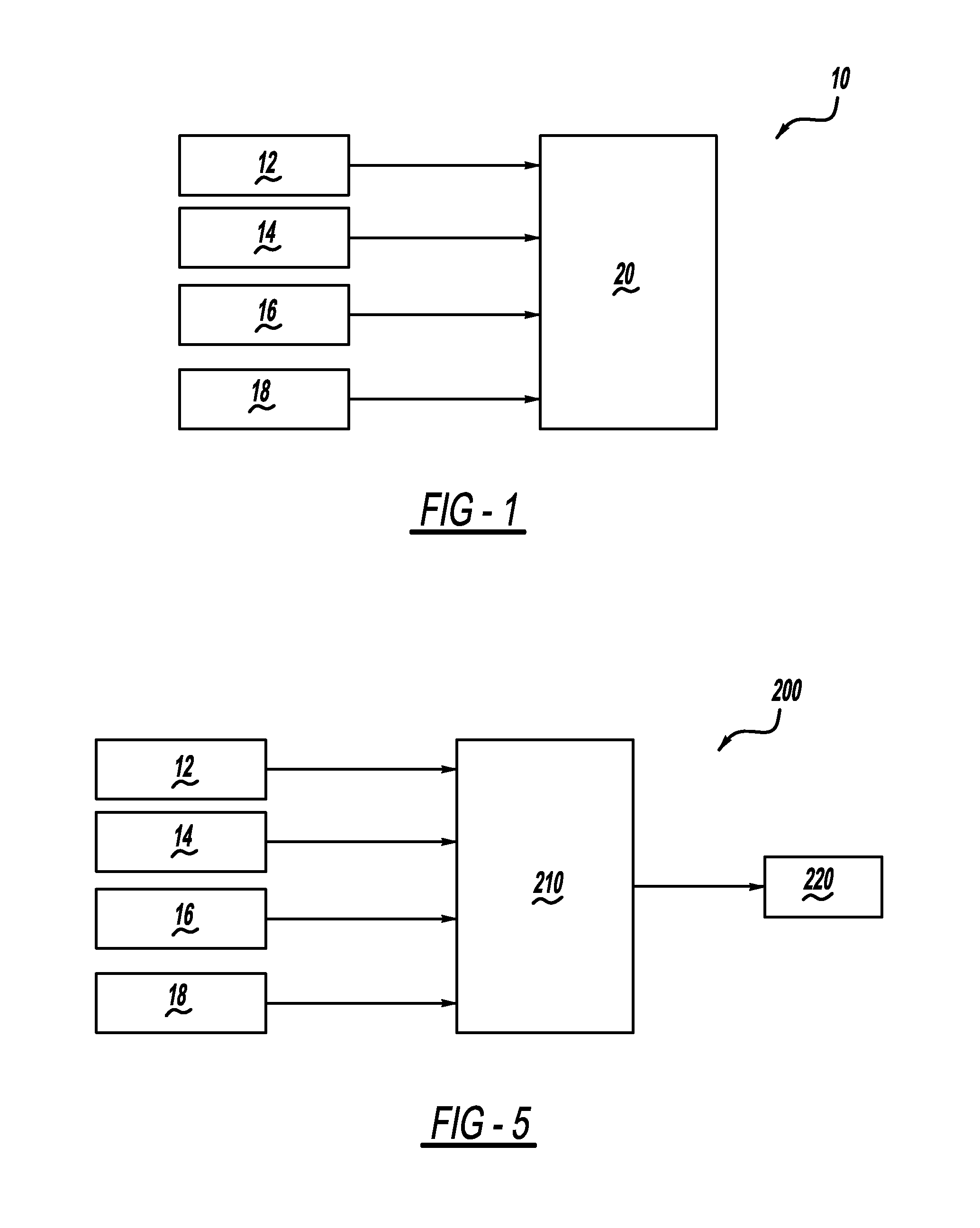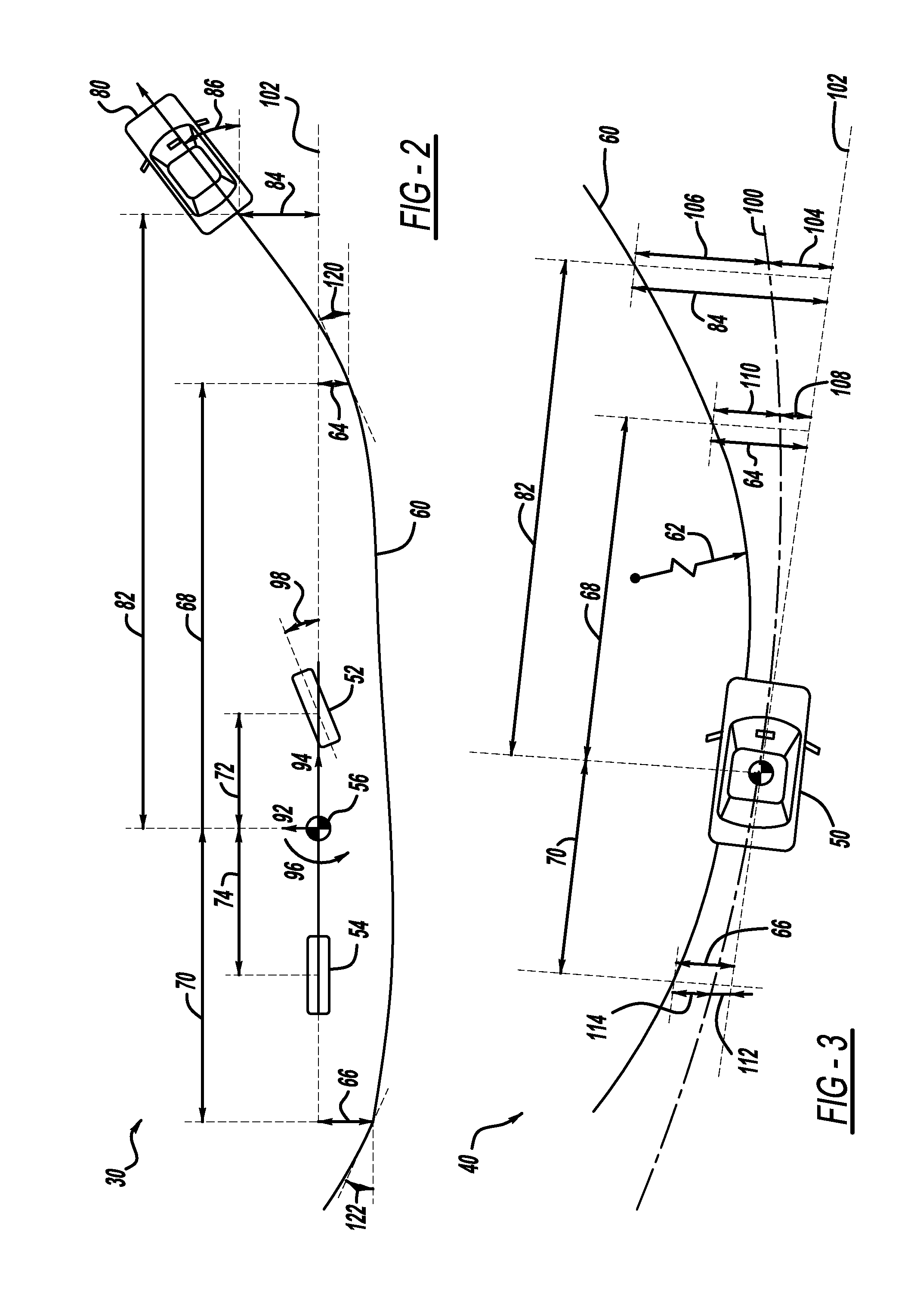Lane fusion system using forward-view and rear-view cameras
a technology of rearview camera and fusion system, which is applied in the field of vehicle lane position method and system, can solve the problems of inability to operate systems relying on the image of the camera for input, preventing a good image from being obtained from the forward-viewing camera, and obscuring the image of the camera
- Summary
- Abstract
- Description
- Claims
- Application Information
AI Technical Summary
Problems solved by technology
Method used
Image
Examples
first embodiment
[0064]FIG. 6 is a block diagram of a lane fusion system 240 using input from two cameras. In the system 240, a full-fledged forward lane sensor system 242 and a full-fledged rear lane sensor system 244 each include a camera and a processor, and can detect and track lane boundaries at their respective ends of the host vehicle 50. The forward lane sensor system 242 and the rear lane sensor system 244 provide their measurements to a lane fusion module 246 which computes enhanced lane boundary and orientation information. The forward lane sensor system 242 sends measurements θF, ΔyF, and κ to the fusion module 246 at a fixed sample rate (e.g., 10 Hz). The rear lane sensor system 244 sends measurements θT and ΔyT at the same fixed sample rate. The forward lane sensor system 242, the rear lane sensor system 244, and the fusion module 246 are interconnected by a serial network 248, which may use the Control Area Network (CAN) or other protocol.
[0065]The fusion module 246 takes inputs from ...
second embodiment
[0077]FIG. 7 is a block diagram of a lane fusion system 300 using input from two cameras. The system 300 does not include full-fledged lane sensor systems at the front and rear. Instead, the system 300 includes a forward-view camera 302 and a rear-view camera 304. The cameras 302 and 304 only capture images and send them to a fusion module 320, which combines both images together, detects and tracks the lane markers.
[0078]Images from the forward-view and rear-view cameras 302 and 304, respectively, are provided to box 306 to find local high intensity regions. The key idea of the box 306 is to find stable local high-intensity regions in different spatial scales. The algorithm begins with building a Gaussian pyramid. At each pyramid scale, the image is subtracted by the enlarged coarse-level image, which is further blurred. Then the local maximum finding operation is applied to the difference images at different scales, and all maxima whose height is less than a threshold h are suppre...
PUM
 Login to View More
Login to View More Abstract
Description
Claims
Application Information
 Login to View More
Login to View More - R&D
- Intellectual Property
- Life Sciences
- Materials
- Tech Scout
- Unparalleled Data Quality
- Higher Quality Content
- 60% Fewer Hallucinations
Browse by: Latest US Patents, China's latest patents, Technical Efficacy Thesaurus, Application Domain, Technology Topic, Popular Technical Reports.
© 2025 PatSnap. All rights reserved.Legal|Privacy policy|Modern Slavery Act Transparency Statement|Sitemap|About US| Contact US: help@patsnap.com



